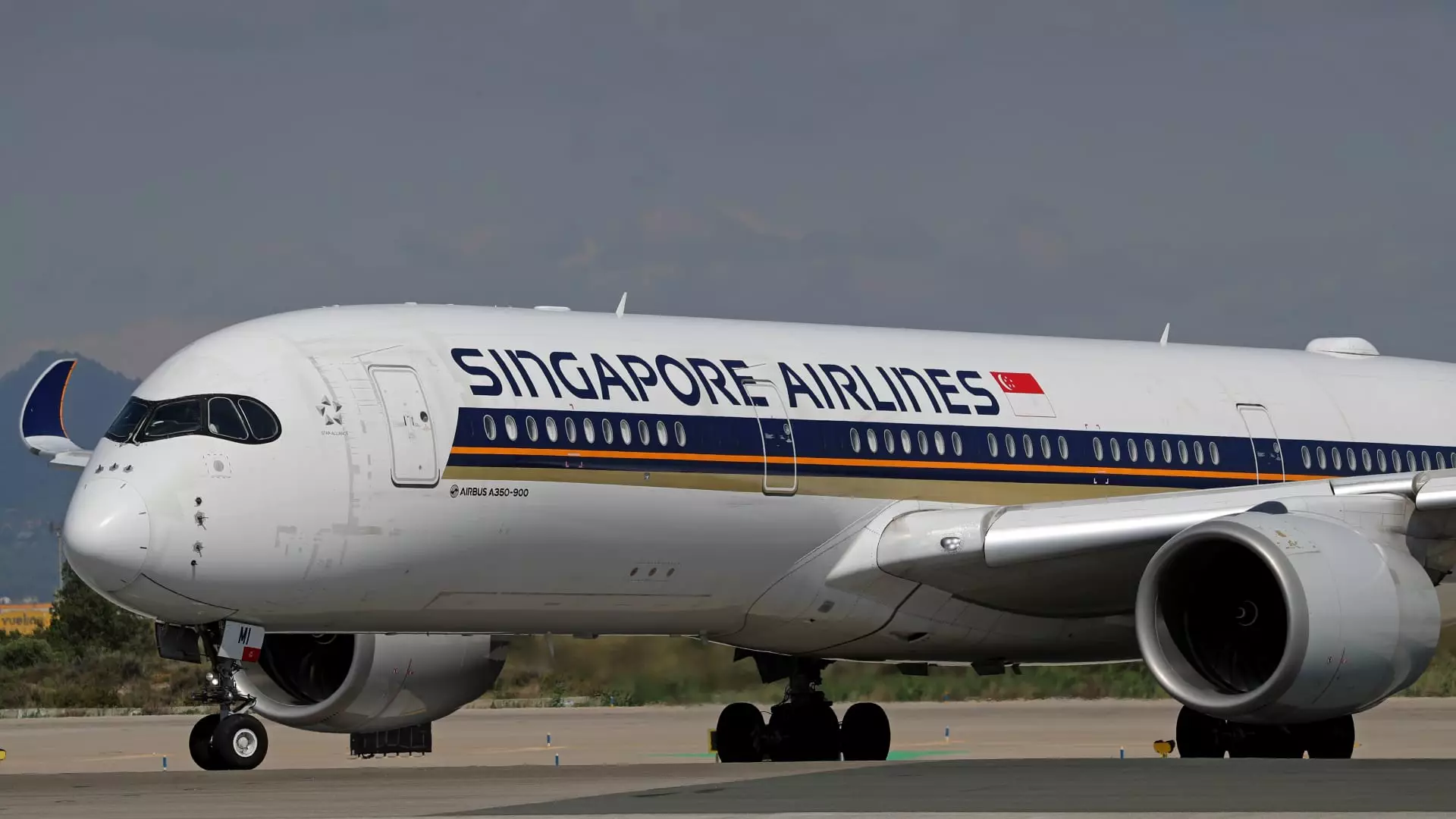Singapore Airlines (SIA) recently reported a staggering decline in net profit for the April to September period, witnessing a nearly 50% drop compared to the same timeframe last year. This significant downturn in financial performance has sent shockwaves through the market, leading to an initial decline of 6.2% in share prices when trading commenced on Monday. Although shares recouped slightly, they still ended the day down by 3.57%, reflecting growing investor concern over the airline’s financial health.
The company’s net profit was reported at 742 million Singapore dollars (approximately $559 million), a dramatic fall from the SG$1.44 billion logged in the previous year. Similarly, operating profit saw a staggering reduction of 48.8%, dropping to SG$796 million from SG$1.55 billion from the same period last year. On a brighter note, SIA managed to increase its revenue by 3.7% to SG$9.5 billion, showcasing resilience in certain areas despite adverse conditions.
Market Dynamics and Competitive Pressures
SIA attributed this profit drop to intensified competition and lower yields associated with increased airline capacity in key markets. At a recent earnings briefing, Chief Commercial Officer Lee Lik Hsin emphasized the growing competitiveness globally, stressing that many airlines are returning to pre-pandemic capacity levels. This return of capacity has placed pressure on airfares, which, in turn, affected profitability.
The passenger traffic figures indicate a year-on-year growth of 7.9%. However, this growth falls short of the 11% expansion in capacity, resulting in a decreased passenger load factor, which dropped by 2.4 percentage points to settle at 86.4%. This discrepancy highlights the challenges SIA faces in matching supply with demand in a recovering market.
Despite these challenges, Singapore Airlines appears steadfast in its commitment to expanding capacity. Lee stated that the carrier would not retreat from its growth trajectory merely in response to competition, a stance that underscores the airline’s long-term strategic vision. “That is not what Singapore Airlines has done in the past, it’s not what Singapore Airlines will do in the future”, he asserted, indicating a determination to adapt and develop strategic plans that serve the organization’s best interests.
SIA also announced a significant investment of SG$1.1 billion towards a cabin retrofit program that targets 41 long-range Airbus A350 jets, expected to modernize its fleet substantially. The retrofit is scheduled to begin service in 2026, aiming for completion by 2030, which will enhance the passenger experience and improve operational efficiency.
Looking ahead, Singapore Airlines anticipates robust demand for air travel in the latter half of the financial year. However, the competitive landscape remains foreboding, posing ongoing challenges as airlines vie for market share. SIA must navigate these complex dynamics carefully while striving to maintain profitability and shareholder confidence in an increasingly crowded sky.
While SIA’s current financial outlook may not be rosy, the airline’s focus on capacity growth, fleet modernization, and adapting to market conditions demonstrates its resilience and strategic foresight in an ever-evolving industry landscape.


Leave a Reply